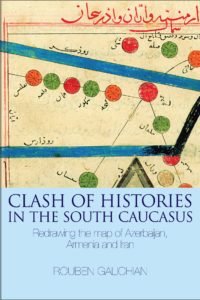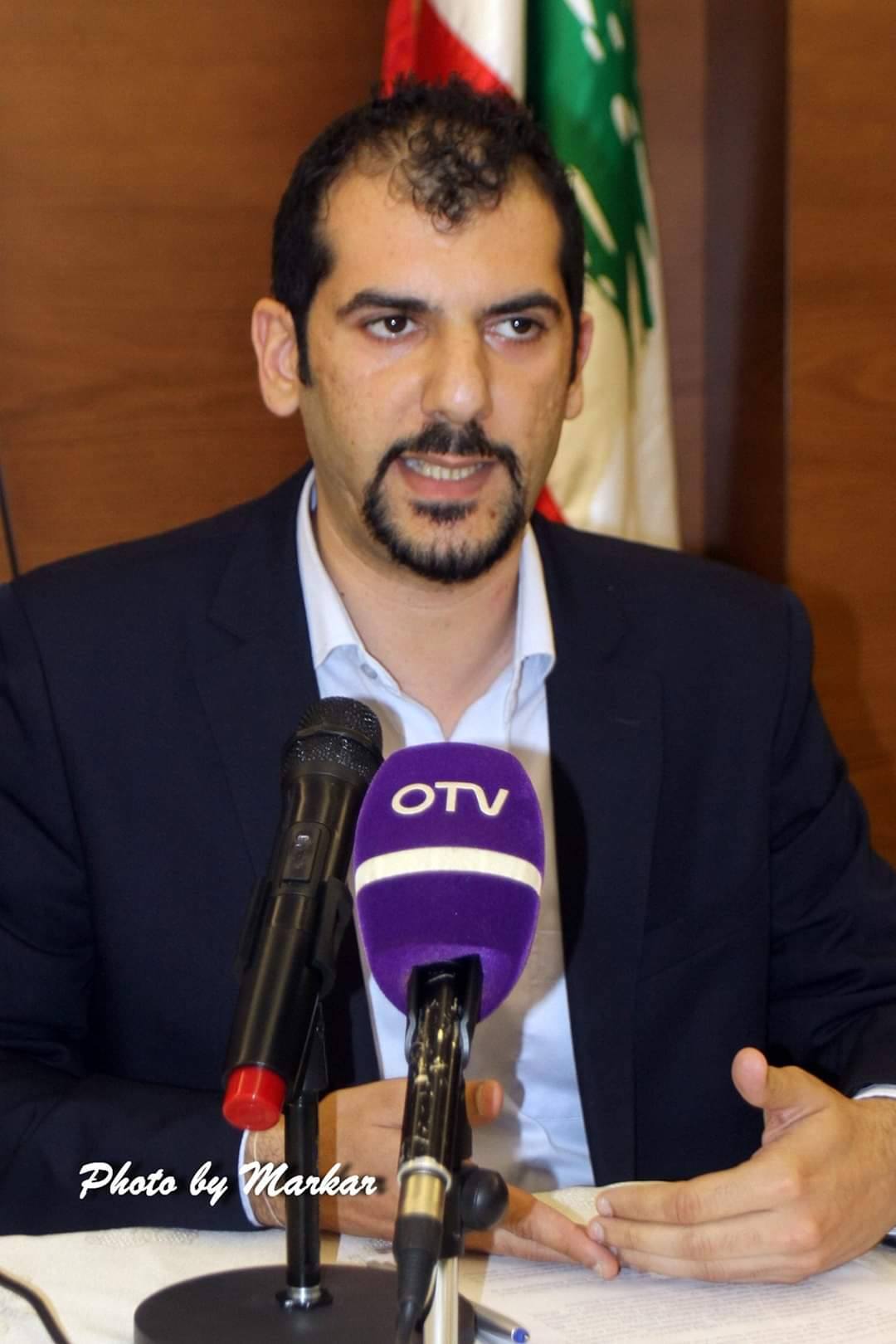 Clash of Histories in the South Caucasus: Redrawing the map of Azerbaijan, Armenia and Iran
Clash of Histories in the South Caucasus: Redrawing the map of Azerbaijan, Armenia and Iran
By Rouben Galichian
Bennet & Bloom, 2012
232 pp.
It is widely acknowledged that history is often manipulated and revised by authoritarian states. History textbooks have been used as a tool to legitimize government and institutionalize racism and hatred. This is the case of Azerbaijan, where after the dissolution of the Soviet Union in 1991, Azerbaijani scholars guided by the political leadership tried to shape the national identity of their state.
Rouben Galichian, in his book Clash of Histories in the South Caucasus: Redrawing the map of Azerbaijan, Armenia and Iran, examines the roots and effects of Azerbaijan’s rewriting of history and why it continues to do so, focusing on Armenia and Iran. In addition to detailing the officially-sponsored invention of modern Azerbaijani national identity, the book also looks at the various methodologies employed by Azerbaijani historians and geographers for their falsification of the documented pasts of Eastern Armenia and the northern Iranian province of Azerbaijan.
According to the author, the official Azerbaijani narrative is to prove that the overall strategy adopted by Azerbaijan is to create a Turkic identity for its entire population, constituting the indigenous people of the territory and that the Armenians are newcomers to the South Caucasus. They also claim that all cultural monuments existing in Armenia, Artsakh and Azerbaijan belonged to the ancient nation of Caucasian Albanians, who claimed to be the ancestors of the Azerbaijanis. The strategy is to erase and deny any trace of the existence of Armenians in the region. Interestingly, this strategy started during the Soviet times and intensified after the disintegration of the Soviet Union and the independence of Azerbaijan in 1991.
Galichian highlights Baku’s strategy in falsifying history and creating a false national identity as follows:
—Distortion of the history and the cultural heritage of Armenia and Iran
—Presenting Armenia as ‘Western Azerbaijan’ and Iranian Azerbaijan as ‘Southern Azerbaijan’
—Trying to convince other governments and international organizations that Caucasian Albania and Azerbaijan are two historical names for the same country, making the peoples of the Republic of Azerbaijan direct descendants of the Caucasian Albanians
—Presenting Armenians as newcomers to the region of the South Caucasus and the Azerbaijani people as indigenous to the area
—Making the Turkish language, imported into the region by the Turkic invaders, the indigenous language of Azerbaijanis
—Appropriation of all historical monuments in Azerbaijan, Artsakh, Nakhichevan as well as Armenia as part of ‘ancient Albanian-Azerbaijani’ heritage
The author refutes Azerbaijan’s distortions and argues that after the 11th and the 12th centuries the term Albania as a country or nation disappears from both Christian and Islamic historical and cartographic literature. He even counterargues Azerbaijani claims that Armenians are newcomers to the region. Azerbaijani historians claim that prior to 1828-1829, there were no Armenians living in South Caucasus and they were brought from Persia by the Russian empire. Galichian shows archival and historical facts that Armenians were forced to leave their homeland by the Persian Shah Abbas and deported deep to Isfahan (around 300,000-400,000 Armenians). Later with the advance of the Russian army, an insignificant number of Armenians (around 35,560) returned to their native land.
Interestingly, Galichian provided facts about the naming of the Republic of Azerbaijan. When the three countries of South Caucasus declared their independence in May 1918, the eastern region (mainly populated by Muslims and Tatars) wanted to name the region as “Eastern and the Southern Trans-Caucasian Republic.” But Musavat, the major party at the time, with its Pan-Turkic leanings managed to name it as Azerbaijan. Persians erupted in protest as the Persian government argued that Azerbaijan was part of Persia, and the country and the territory east of the South Caucasus (northeast of the Arax river) have never been part of Iranian Azerbaijan. However, after the occupation by the Bolsheviks, Soviet leaders didn’t attempt to change the name as they played the ‘Southern Azerbaijani card’ against Iran.
Galichian addresses President Ilham Aliyev’s attempts to revise history as more proof that Azerbaijan’s distortion and falsification of history are backed by the state. In December 2005 at the National Academy of Sciences, Aliyev addressed Azerbaijani historians and encouraged them to busy themselves with “research to prove that Armenians are newcomers to the region.” He also allocated huge funding to this project. In 2011, during the general assembly of the same institution, he expressed satisfaction that Azerbaijani historians have responded positively to his appeal and “proved that present-day Armenia is established on the historical lands of Azerbaijan.” Later, on December 10, 2020, at the Baku Victory Parade, Aliyev called “Yerevan, Zangezur and Sevan as historical Azerbaijani lands.”
The conclusion of this fabrication clashes with the internationally accepted historical record that states the contrary, and so the undertaking exposes inherent errors and inevitable contradictions. As a result, the following conclusions are evident from this important and well-researched book:
—The majority of the Albanian Christian tribes converted to Islam during the eighth and ninth centuries. A few centuries later, Caucasus Albania, located north of Kura River gradually disappeared from the maps.
—The multitude of churches, monasteries and Christian monuments built during the 10th to 18th centuries on the current territory of Azerbaijan and Artsakh could not have been built by Islamized Albanians or the insignificant number of Udis who remained Christian in this period. Only Armenians had the resources to build and maintain these structures.
—The present Armenian population of New Julfa near Isfahan, resettled there from Nakhichevan and the surrounding areas by the Persian Shah Abbas, is living proof that Armenians were uprooted from their homeland.
—Up to the Middle Ages, the languages spoken in the Iranian province of Azerbaijan were not Turkic, but the Indo-European Azari dialects related to the Median and Parthian. It was only during the 13th century that this language had disappeared and was replaced by the Turkic language.
—According to historians and travelers’ accounts, the territory or country named Azerbaijan north of Arax River did not exist until 1918. The evidence of the ancient and later cartographers, presented in more than 50 color maps, along with the Greek and Roman historians and the accounts of Islamic and European travelers confirm the international position that runs counter to Azerbaijan’s false claims.
—The territories labeled ‘Northern Azerbaijan’ and ‘Southern Azerbaijan’ historically never existed. These are terms invented by modern Azerbaijani historians to serve political ends.
As Azerbaijan engages in fabrication and distortion of historical facts and lobbies around the globe through its lobbying activism, Armenians must continue and intensify in showing the historical reality by engaging in political and diplomatic activism to preserve what has been left of Armenian culture in the occupied territories of Artsakh. The danger of the Nakhichevan example with the destruction of cross-stones, the ‘Albanization’ of Armenian monasteries and iconoclasm of Armenian heritage is still haunting our generation and already is being conducted around occupied Artsakh. The slogan “never again” should be translated into action. Diasporan organizations, Armenia’s Foreign Ministry and religious institutions must come up with a concrete plan and lobby at UNESCO and other international agencies to prevent the cultural cleansing of Armenian presence in the region.



How can i order this book
The book is available online from Amazon etc.
and what diaspora is doing regarding this decisions of Mr. Pashinian, does he know what he is doing?
what are diaspora Armenians 10,000,000 rights.
we have all this researchers, historians, and knowledgble specialist but we do nothing.
as we have not done anything in the last 30 years. NOTHING.
we handed over everything to the idiots and traitors of yerevan, it is time to start to exact our revenge on the current traitor
Thanks, yeghia for such a detailed investigation,
Your contributions (articles) to preserving the past and presence of Armenia are remarkable.
I can testify that Iranian-Armenian in New Julfa are descendent of Iranian-Armenian who moved to Isfahan. And it is worthwhile mentioning the historical Black Church in Iran’s Azerbaijan and Iranian- Armenian people who till today are serving in its monasteries. And origin of Azerbaijan, Azaragan, Land of Burning Fire in Dari language and the history of Zarathustrianism in the region that outdates three major religions. There are maps, artifacts, as evidence kept in Museums in Tabriz, Ardabil, Isfahan and Tehran indicating the presence of our ancestors in Artsakh, Yerevan, before and after conversion to Christianity. Victors and owners of wealth try to rewrite the history and rename locations in short-term (Some Nations in South of Persian Gulf, call it Gulf, Gulf of Mexico, is called Gulf, La manche channel or Channel, Linito Island or Gibraltar, …). Our duty? To provide facts and disprove those charlatans, who have short- and long-history of corruption (Pandora Papers).